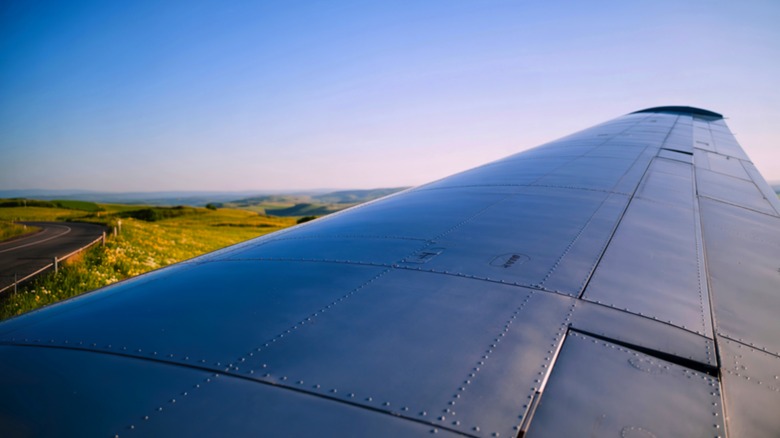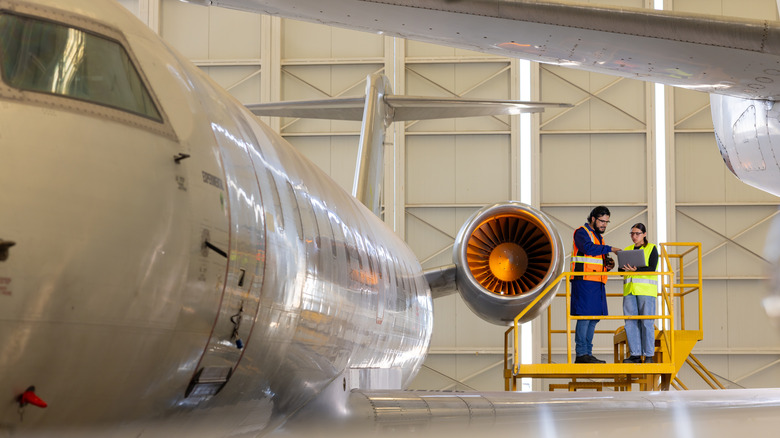Why Airplanes Still Use Millions Of Rivets (But Cars Are Welded)
You may not have consciously thought about it, but the way we build cars is very different from the way we build airplanes. Your sedan or SUV has a smooth, unibody exterior because its individual components are welded together to create an integrated structure that is strong and safe. However, if you take a close look at popular passenger jets like the Airbus A320 on your next flight, you'll notice that the panels that make up the fuselage and wings are joined together with rivets, rather than welded. It's a fascinating combination, considering that the first rivets were designed by ancient Egyptians more than 5,000 years ago, while humans only took to the skies a little over 120 years ago.
Welding is used in other areas of many types of aircraft, though, including wing mounts and engine pylons. A few early prototypes, like the Junkers J 1, experimented with welded bodies, but the aircraft industry quickly realized that riveted joints are the answer, for multiple reasons. Riveted joints are stronger and easier to inspect, and the process won't weaken the aluminum alloys that make up most commercial aircraft.
Rivets help keep planes safely in the air
We may use a historic method to manufacture airplanes, but they are still statistically the safest way to get where you need to go. The process of riveting and the materials we use have changed significantly in modern times, but the basics are the same. A rivet has a head and a smooth cylindrical shaft, and it joins together two or more materials. They are much stronger than welded joints because they connect the two pieces from the inside, rather than just on the exterior.
Most aircraft skin today is made of aluminum, which became a hallmark of airplane design during World War I. Aluminum is used for commercial aircraft because it is lightweight, inexpensive, resistant to corrosion, and very strong. Several different types of aluminum are commonly used for aircraft, but the most prevalent options offer poor weldability. Exposure to heat weakens aluminum, and of course, you want an aircraft's fuselage to be as strong as possible. Aircraft skin is also typically too thick to be safely welded.
Both welding and riveting require a high degree of skill, but modern technology has made it simpler to install and make rivets consistently. It's also easier to inspect riveted joints visually, as it doesn't require the machinery necessary to take a close look at a welded joint. This simplifies both the manufacturing and maintenance processes. Riveting, thus, makes sense for planes and the higher forces they encounter compared to the Toyota sitting in your garage.

